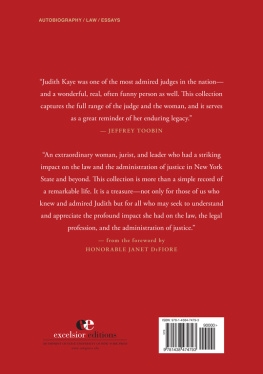Judith Pettigrew - Maoists at the Hearth: everyday life in Nepals civil war
Here you can read online Judith Pettigrew - Maoists at the Hearth: everyday life in Nepals civil war full text of the book (entire story) in english for free. Download pdf and epub, get meaning, cover and reviews about this ebook. year: 2013, publisher: University of Pennsylvania Press, genre: Politics. Description of the work, (preface) as well as reviews are available. Best literature library LitArk.com created for fans of good reading and offers a wide selection of genres:
Romance novel
Science fiction
Adventure
Detective
Science
History
Home and family
Prose
Art
Politics
Computer
Non-fiction
Religion
Business
Children
Humor
Choose a favorite category and find really read worthwhile books. Enjoy immersion in the world of imagination, feel the emotions of the characters or learn something new for yourself, make an fascinating discovery.

- Book:Maoists at the Hearth: everyday life in Nepals civil war
- Author:
- Publisher:University of Pennsylvania Press
- Genre:
- Year:2013
- Rating:3 / 5
- Favourites:Add to favourites
- Your mark:
- 60
- 1
- 2
- 3
- 4
- 5
Maoists at the Hearth: everyday life in Nepals civil war: summary, description and annotation
We offer to read an annotation, description, summary or preface (depends on what the author of the book "Maoists at the Hearth: everyday life in Nepals civil war" wrote himself). If you haven't found the necessary information about the book — write in the comments, we will try to find it.
Maoists at the Hearth: everyday life in Nepals civil war — read online for free the complete book (whole text) full work
Below is the text of the book, divided by pages. System saving the place of the last page read, allows you to conveniently read the book "Maoists at the Hearth: everyday life in Nepals civil war" online for free, without having to search again every time where you left off. Put a bookmark, and you can go to the page where you finished reading at any time.
Font size:
Interval:
Bookmark:

Maoists at the Hearth
THE ETHNOGRAPHY OF POLITICAL VIOLENCE
Tobias Kelly, Series Editor
A complete list of books in the series is available from the publisher.
Everyday Life in Nepals Civil War
Judith Pettigrew
Foreword by
David N. Gellner

UNIVERSITY OF PENNSYLVANIA PRESS
PHILADELPHIA
Copyright 2013 University of Pennsylvania Press
All rights reserved. Except for brief quotations used
for purposes of review or scholarly citation, none of this
book may be reproduced in any form by any means
without written permission from the publisher.
Published by
University of Pennsylvania Press
Philadelphia, Pennsylvania 19104-4112
www.upenn.edu/pennpress
Printed in the United States of America
on acid-free paper
10 9 8 7 6 5 4 3 2 1
Library of Congress Cataloging-in-Publication Data
Pettigrew, Judith.
Maoists at the hearth : everyday life in Nepals civil war
/ Judith Pettigrew ; foreword by David N. Gellner.
p. cm. The ethnography of political violence
Includes bibliographical references and index.
ISBN: 978-0-8122-4492-2 (hardcover : alk. paper)
1. Nepla Kamyunishta Prt (Movd). 2. Political violence
Social aspectsNepal. 3. War and societyNepal. 4. Nepal
HistoryCivil War, 1996 2006Social aspects. I. Gellner,
David N. II. Title.
DS495.6 .P4555 2013
954.96
2012049809
David N. Gellner
The Nepalese civil war/the Maoist insurgency/Peoples War in Nepalwhat you call it depends on the assumptions you approach it withlasted ten years, from 1996 to 2006. As Judith Pettigrew describes in these pages, more than 13,000 people were killed, often in brutal ways, and many more were maimed for life, physically, psychologically, or both. The rise of the Maoists was a shock both to ordinary nonpolitical Nepalis and to almost all foreign scholars of Nepal. The Maoists had come from nowhere (so it seemed) to dominating the country in a few short years. In the 2008 elections for the Constituent Assembly they won the biggest share of votes and exactly half of the 240 seats contested on a first-past-the-post basis (the Congress Party, which came in second, won only 37).
Those of us who work on Nepal are frequently asked four questions about the Maoists: (1) How is it possible that in the 1990s, with communism in retreat all over the world, you suddenly get a successful Maoist revolution in Nepal? (2) Does the Maoists success have anything to do with China? (3) Are they really Maoists? (Perhaps they are just pretending to be Maoists?) (4) How were the Maoists, at the height of their military success, able to gain control of up to 80 percent of the country (though not the fortified district capitals)? Was it because ordinary people supported them?
Question 1 is large and complex. Anthropologists, political scientists, and political economists of Nepalinitially as taken aback as everyone elsebegan to turn their minds to it as soon as the seriousness of the conflict became apparent. Social sciencethe best efforts of economists notwithstandingis not predictive in the same way as natural science. It is only now, as the dust is starting to settle, that the war is beginning to be grasped in all its complexity.
Yet it was almost certainly the example of Maoist success in Nepal that inspired the various Indian factions based in north and south to unite into a single Indian Maoist party in September 2004. At the same time, Maoist groups are part of a wider landscape of armed insurgent groups that encompasses also ethnonationalist movements, as in the northeast of the country, Kashmir, Punjab, and Hindu nationalist groups that seek to intimidate Muslims and others (Gayer and Jaffrelot 2009).
The rise of Maoism in Nepal is multiply paradoxical because at the time when China was most interested in exporting revolution to Nepal and elsewhere (the 1960s and 1970s), when Marxist-nationalist peasant revolutions were occurring in Vietnam and Mozambique, no one in Nepal seemed to be interested (there was in fact an underground movement, but most were not aware of it). Today, by contrast, Chinas Communist Party is deeply enmeshed in neoliberal global capitalism. It believes in a strong state and is intensely hostile to revolutionary movements (it supported King Gyanendra and his authoritarian attempt to suppress dissent, described in , until the very end). In the 1990s, when China, in all its actions, had rejected revolution, a true-believing Maoist movement was launched in Nepal and now (2012) provides the country with its second Maoist prime minister, Baburam Bhattarai. The top leaders of Nepals Maoists were shunned and dismissed as shameful traducers of Maos good name as long as they were revolutionaries. Only once they had achieved power, following the election of 2008, were they invited to China as honored guests.
The answer to Question 3 is unequivocal: yes, they are Maoists. The leaders and many of those in the movement have studied Maos works in detail. The military strategies adopted in the civil war, the terminology used to describe it, and the ideological framework within the whole project was understood were taken straight from the Maoist archive. Of course, many young recruits were ignorant of ideological subtleties, and at the outset no doubt of much else, but this is necessarily true of any such movement. There may be more than a whiff of elitist essentialism lying behind the question (as when Western aficionados of Tibetan Buddhism claim that ordinary Tibetans understand nothing of Buddhism). However, the question may also be posed in a more sophisticated way: are the Nepali Maoists, like some armed groups in Africa or the JVP in Sri Lanka, adopting an off-the-peg ideology as the most convenient cover for self-interested armed revolt? Of course, there are or have been opportunists (khauvadi, avasarvadi) who join the Maoists for reasons that have nothing to do with ideology or idealism, a possibility recognized and allowed for both in popular Nepali and in Maoist understandings. But the empirical record in the Nepalese case is clear: Maoist ideas and ideology have played a highly important role in training and motivating those who have joined (and suffered) in the movement. Without these ideas, the willingness of so many to face death for the future of their country, the millennial hopes that inspired a generation to sacrifice themselves for the greater good, throwing themselves against the barbed-wire encampments and superior fire power of the Royal Nepal Army, cannot be explained or properly understood.
With Question 4, we reach the nub of the issues to which Judith Pettigrews pathbreaking ethnography is addressed (though it would be a mistake to jump to the conclusion that her historically rich and nuanced account is just an explanation of how some villagers came to be Maoist supporters). No other anthropologist of Nepal, whether foreign or Nepali, has returned so often and so devotedly to the same place throughout the course of the conflict. In doing so, she has gathered the material for a highly poignant and unique record of village Nepal. She knew the village intimately before the Maoists arrived, she tracked the Maoists first encounters with the villagers, she saw them become the local sarkar or legitimate government in the eyes of the villagers, she was present at the election of 2008, and she has seen the Maoists become just one political party among others, with members in the village.
Font size:
Interval:
Bookmark:
Similar books «Maoists at the Hearth: everyday life in Nepals civil war»
Look at similar books to Maoists at the Hearth: everyday life in Nepals civil war. We have selected literature similar in name and meaning in the hope of providing readers with more options to find new, interesting, not yet read works.
Discussion, reviews of the book Maoists at the Hearth: everyday life in Nepals civil war and just readers' own opinions. Leave your comments, write what you think about the work, its meaning or the main characters. Specify what exactly you liked and what you didn't like, and why you think so.









